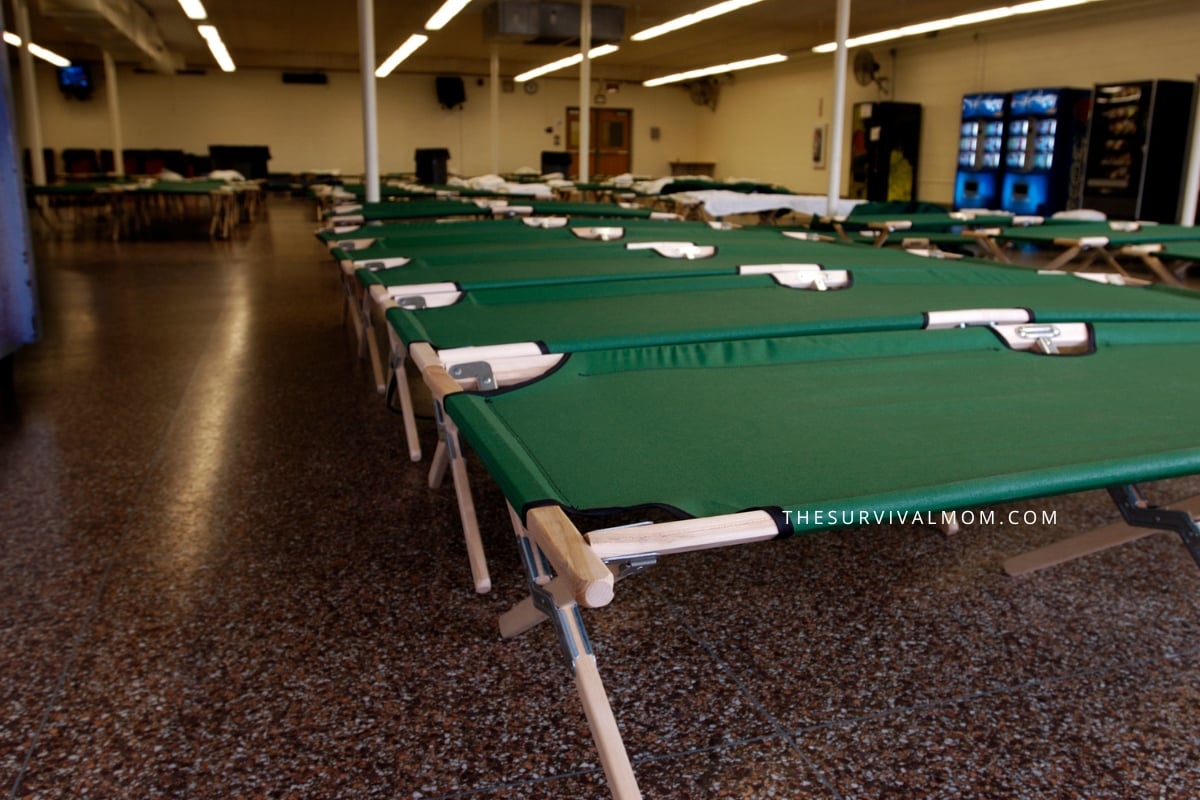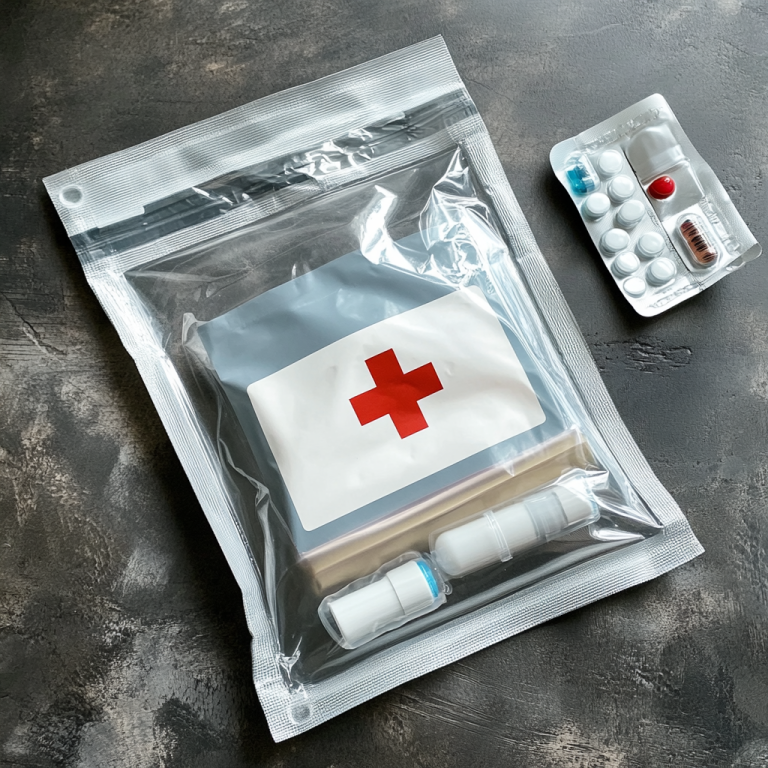Some of the links in this post may contain affiliate links for your convenience. As an Amazon Associate, I may earn a small commission from qualifying purchases without any increase in price to you.
During disasters such as wildfires, floods, and hurricanes, we may be forced to seek shelter in unfamiliar places. This article equips you with essential information to prepare for and navigate a stay at a Red Cross shelter. Whether it’s a natural disaster or another unforeseen event, being prepared can significantly reduce stress and ensure your safety for both you and those you shelter with.

The need for an emergency shelter can be anticipated in some cases, such as a forecasted hurricane. In larger wildfires, fire officials can sometimes predict the need for additional evacuations requiring a shelter be opened. But in most cases, a shelter is opened with little or no notice. Similarly, the evacuated residents have a sudden need to leave their homes for an unfamiliar environment and an uncertain future. Fortunately, you can prepare in advance for an unexpected stay in a Red Cross shelter.
What is a Shelter?
A shelter is an improvised group dwelling with an organized support staff, established as the result of a disaster or local emergency. American Red Cross Chapters across the country have cots, blankets, and other supplies standing by in case a shelter needs to be opened in an emergency. They also have volunteers and staff trained as Shelter Managers, Shelter Staff, and supporting services provided by Nurses and Disaster Mental Health counselors.
In most cases, the Red Cross has identified the location, such as a school or community center, has inspected it and has entered into an agreement with whoever runs it far in advance of the need for a shelter. That way they can be sure how many people it can accommodate and that it has adequate restroom facilities and other requirements in advance.
Who else operates shelters?
However, not all shelters are operated by the Red Cross. Sometimes a church or local government will open and operate a shelter without the help (or knowledge) of the Red Cross; there’s nothing wrong with “spontaneous” shelters, but they may not be as organized or well-supported as a Red Cross shelter.
How do I find a shelter?
So you’ve been evacuated, and need a place to stay or you must stay in your car. Where do you go? Your local officials advertise the locations of shelters on TV and radio news stations, via their mass-notification systems, and on their web pages, Twitter feeds, and Facebook pages. The Red Cross also notes the locations of open shelters on their web page, https://www.redcross.org/find-help. They also have several “apps” for Android and Apple smart phones with great emergency and preparedness information.

What happens when I arrive?
All shelter residents are required to register and agree to adhere to the shelter rules. You will be screened for health issues, disabilities, access and functional needs, and medications. You should have shown up with your needed meds. If you don’t have them, alert the staff as soon as you arrive. They may be able to facilitate replacements. If you arrived by car, leave any valuables locked in the car out of sight. Your locked car is more secure than inside the shelter.

What to Pack for Staying in a Shelter
You absolutely can prepare for a temporary stay in a shelter. In many ways, it’s like preparing for a camping trip. You can have a small “shelter kit” prepared in advance. Examples:
- They will provide a cot, but you can bring your own, which you can choose yourself.
- You can bring bedding for your special cot as well as good pillows.
- Pack a nice towel and small versions of favorite toiletries, brush/comb, toothbrush, etc.
- If you have special dietary needs or follow a certain diet (gluten-free, Kosher, etc), you need to bring your own food. They may not be able to accommodate your needs.
- Pack a small security container (like a pistol safe) that has a way to attach to something solid, to keep your wallet, meds, etc. Theft is sometimes a problem in shelters.
- Throw in a couple of paperback books, cards, puzzles, or toys for the kids to pass the time.
- Invest in extra phone and tablet chargers, an extension cord, and a multi-plug adapter. Outlets are few!
- Pajamas are a must, even if you don’t wear them at home. A robe might be a good idea, too.
- Pack earplugs and an eye-shade if you have difficulty sleeping.
- Anything else in your daily routine you or your family members would miss, such as coffee or tea.
Tips for Shelter Life
- Follow rules and guidelines: Adhere to shelter rules to maintain a safe and orderly environment for everyone.
- Be considerate of others: Respect the privacy and space of fellow shelter residents.
- Be patient: Understand that shelters may be crowded and resources may be limited.
Can I take my pets to a shelter?
Shelters have to accommodate legitimate service animals, period. Beyond that, the difficulties surrounding sheltering people with their household animals led to the Pets Evacuation and Transportation Standards Act of 2006 (Public Law 109-308), also known as the Pets Act. The Act directed the Federal Emergency Management Agency (FEMA) to ensure that emergency plans “take into account the needs of individuals with household pets and service animals prior to, during, and following a major disaster or emergency.”
In other words, take your pets with you when you evacuate. They are part of your family. Local governments are required to provide them with shelter, just as they must provide you shelter. But understand that they may be sheltered away from the Red Cross shelter, especially at first. You may be temporarily separated. This post will help you prepare a evacuation kit for your pets.
Larger animals like horses will probably be sheltered elsewhere, like at a nearby fairground, but help should be available. Registering with a local large-animal rescue group in advance will greatly facilitate getting help for them.
FAQ
Mass Care is the provision of group shelter, feeding, and supportive services to disaster victims.
Shelters must accommodate service animals. Due to challenges sheltering pets during disasters, the Pets Act of 2006 mandates that emergency plans address the needs of pet owners. Bring your pets during evacuations; they are part of your family. Local governments must provide shelter for them, though temporary separation may occur.
An Evacuation Center is basically a shelter without the cots. Evacuees can get information updates, snacks, and a place to hang out away from the danger.
Related Emergency Evacuation Content

Final Thoughts
By understanding what to expect, preparing, talking it through, and practicing, you’ll be better equipped to handle any challenges that may arise if you needed to stay in a Red Cross shelter. Remember, a positive mindset can go a long way in making your experience more manageable.




















